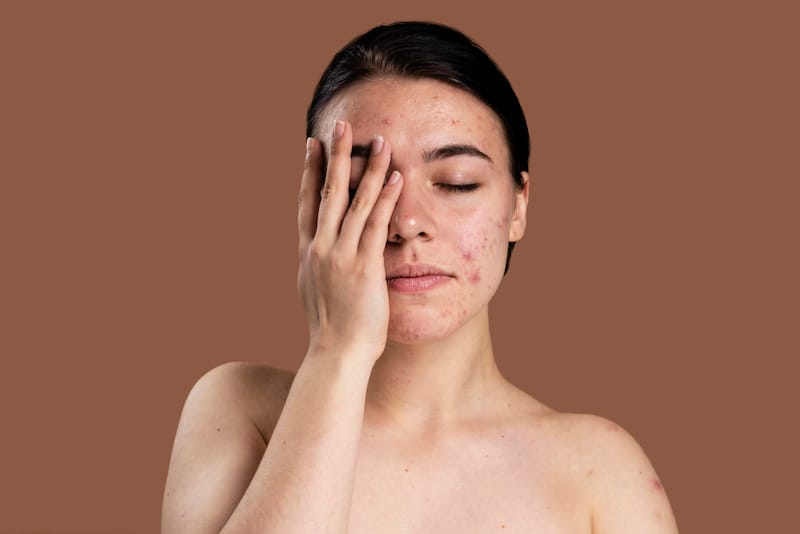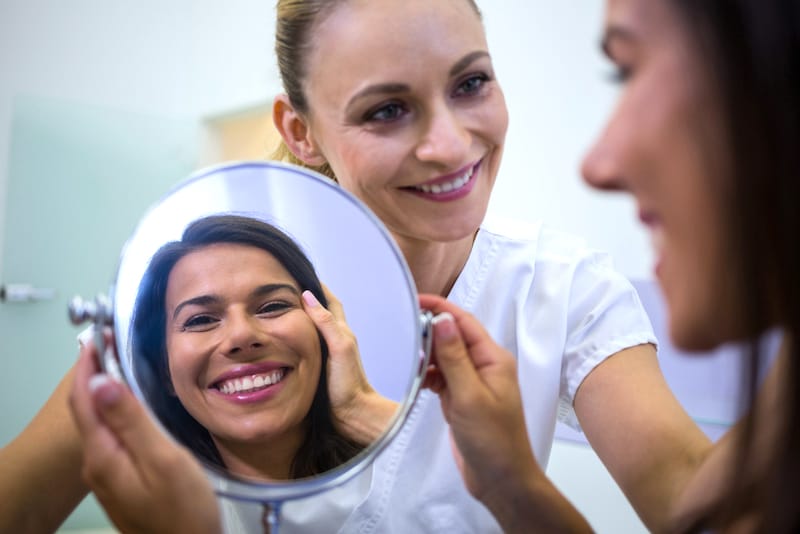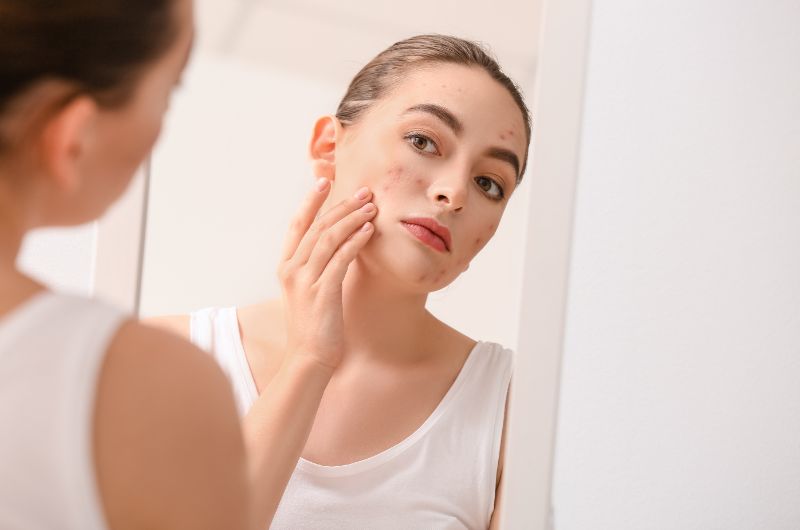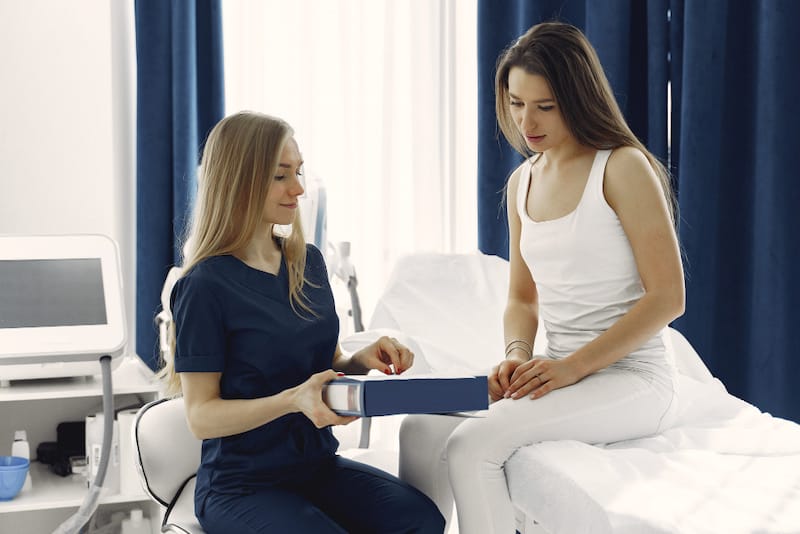Compared to Spironolactone, which may take time to see results, Doxycycline antibiotic is prescribed for short-term acne treatment. Doxycycline kills acne-causing bacteria while also reducing inflammation. On the other hand, Spironolactone is an effective and reasonably priced medication used to treat stubborn acne in women. If you are uncertain whether to take Doxycycline or Spironolactone to treat your acne, consult your dermatologist. They can advise you on which medication is best for you or suggest alternatives.
Doxycycline, an oral antibiotic pill, has been used by dermatologists for many years to treat acne. Doxycycline pills are a group of antibiotics also known as tetracyclines.
On the other hand, Spironolactone is a potassium-sparing diuretic drug known as a water pill. It is an oral suspension or tablet used to treat acne. Its oral tablet is available as a brand-name drug known as Aldactone and a generic drug.
Generic medicines are usually less expensive compared to brand-name drugs; however, they might not be available in all forms compared to brand-name drugs.
Acne is a common skin condition that occurs when the pores of your skin get blocked by dirt, dead skin cells, bacteria, and oil.
It causes pimples mainly on the face, forehead, upper back, shoulders, and chest. Acne affects people of all ages, up to 50 million in America; however, it is common among teens.
Acne can be frustrating to treat, and if you have been to a dermatologist, he might have prescribed Doxycycline or Spironolactone to treat the condition.
Unlike Doxycycline drugs, Spironolactone drugs are prescribed to women only, targeting the hormonal causes of acne. In men, it lowers testosterone levels and causes severe side effects.
On the other hand, doxycycline drugs can be taken by both men and women and work quickly compared to spironolactone drugs to improve acne.
Doxycycline drugs are used for a short time and usually cause fewer side effects than Spironolactone.
What is Doxycycline?
Doxycycline is an oral antibiotic pill used to treat bacterial infections in the body. It is also used to treat pimples caused by rosacea, also known as acne rosacea.
Doxycycline belongs to a class or a group of antibiotics known as tetracyclines.
Two other drugs that belong to this group are minocycline and tetracycline. This drug is available only on prescription; therefore, your dermatologist can work with you to find the best drug that can work for you.
Doxycycline is available in the following dosage forms:
- Tablets
- Syrup
- Capsule (extended release)
- Tablets (delayed release)
- Powder for suspension
How does Doxycycline work to treat acne?

Doxycycline work by stopping the multiplication of bacteria on the skin. It also has anti-inflammatory effects, which reduce inflammation in the skin. Everyone has bacteria on the skin; it is normal.
There are different types of bacteria on your skin, and they usually don’t cause any inflammation.
However, at the puberty stage onwards, these bacteria can cause stubborn pimples. That’s because, at puberty, the oil glands produce more oil.
When this oil mixes with dead skin cells and bacteria, it blocks your pores in the skin, causing inflammation or pimple, also known as acne. That’s why Doxycycline antibiotics help treat acne.
What is the best way to take Doxycycline?
Doxycycline comes in a tablet, syrup, Capsule, or powder for suspension and is taken once or twice a day by mouth with a full glass of water.
Talk to your dermatologist about the best way to take Doxycycline. Follow the directions on the prescription label carefully or ask the doctor for clarification.
You can take Doxycycline without food, but if it upsets your stomach, taking it with food can help. If you are taking the suspension or syrup medication, shake the bottle well before use to mix the medication evenly.
Note: This medication is only for you. Please do not share it with others.
Potential side effects of Doxycycline
All medicines have benefits and side effects that come with them. The following are the common side effects that come with Doxycycline drugs:
- Loss of appetite
- Swollen tongue
- Dry mouth
- Anxiety
- Diarrhea
- Nausea
- Vomiting
- Viginal discharge
- Painful urination
- Back pain
- Sore throat
Some of the side effects can be severe.
Contact your dermatologist immediately if you experience the following side effects:
- Headache or blurred vision
- Unusual bleeding
- Joint pain
- Difficulty in swallowing or breathing
- Swollen glands or severe blisters
- Swelling of the face or eyes, tongue, throat, and lips
- Fast heart rate
- Dizziness
- Severe skin reaction
Doxycycline has other side effects. This list does not contain all the side effects; therefore, you should contact your doctor if you experience any unusual or severe problems while taking the medication.
What is Spironolactone?

Spironolactone is a potassium-sparing diuretic drug known as a water pill because it makes you pee more. Spironolactone is only used in women to treat acne.
Several studies have shown that Spironolactone taken once daily at a dose of 50 – 200mg, can treat acne in women.
Spironolactone has an anti-androgen that stops male hormones such as testosterone from working. That is why it is not recommended for men.
Spironolactone is commonly used to treat:
- Edema
- Heart failure
- High levels of aldosterone
Spironolactone is available only on prescription, and it comes in the following forms:
- Tablets
- Suspension
How does Spironolactone work to treat acne?
Spironolactone reduces the production of androgen hormones such as testosterone in your body. These hormones make the skin produce too much oil, eventually blocking the skin’s pores and causing acne.
Androgen hormones help improve masculine characteristics; however, everyone, including women, needs a certain amount of androgens for normal body function. But lowering the hormones down can help treat acne.
What is the best way to take Spironolactone?
Spironolactone is prescribed orally once daily—doses for acne range from 25mg to 200mg. Your dermatologist can recommend the best medication based on your specific situation.

Spironolactone could be taken with or without food. Whichever way you choose to take the drug, make sure you stick to it.
Your dermatologist may recommend combining Spironolactone with oral birth control pills to treat your acne. This combination gives better results than treating with Spironolactone alone.
Potential side effects of Spironolactone
Dermatologists carefully scan women before prescribing Spironolactone to them to reduce severe side effects.
Below are some of the side effects that can occur with Spironolactone:
- Headache
- Dizziness
- Drowsiness
- Nausea and vomiting
- Irregular menstrual cycle
- Visiting the bathroom frequently
- Lower sex drive (lower libido)
- Breasts tenderness
These side effects might fade away within a few days or weeks.
Talk to your dermatologist if you encounter these severe side effects:
- Skin rash
- Fever
- Difficulty in breathing
- High potassium level in the blood, which comes with a slow heart rate
- Breast enlargement
- Severe skin reactions such as peeling and loosening of your skin in your mouth
Comparison of Doxycycline vs. Spironolactone for treating acne
The table below summarizes the comparison of Doxycycline vs. Spironolactone for treating acne, including its effectiveness, potential side effects, and other alternatives.
| Doxycycline | Spironolactone | |
|---|---|---|
| Acne treatment | 1. Comes in the form of a capsule/tablet 2. Taken by mouth with a full glass of water 3. The typical dosage is 50mg or 100 mg twice daily | 1. Comes in the form of a suspension/tablet 2. Tablets are taken by mouth with a full glass of water 3. The typical dosage is 25mg or 200 mg once daily |
| Effectiveness | 1. Helps kill bacteria on the skin 2. Does not cause inflammation 3. Improvement could be seen in two to three weeks | 1. Decreases excess oil and acne on the skin by lowering androgen hormones 2. Reduces acne by 50% – 100% 3. Decrease in acne breakout and oiliness could be noticed within four to eight weeks of beginning treatment |
| Side effects | 1. Can cause nausea/vomiting/ diarrhea 2. Supplements high in iron/calcium can prevent your body from absorbing the medication 3. Multivitamins interfere with Doxycycline treatment 4. Sun sensitivity 5. Causes esophagus inflammation | 1. Irregular menstruation 2. Frequent urination 3. Low blood pressure 4. Dizziness/ nausea/vomiting 5. Headaches 6. Breast tenderness/breast enlargement |
| Other alternatives | 1. Minocycline 2. Azithromycin 3. Erythromycin 4. Tetracycline | 1. Birth control pills/oral contraceptives |
Doxycycline is prescribed to patients who have not responded to other antibiotics, such as minocycline.
In contrast to Spironolactone, which can only be administered to women, it can be prescribed to both men and women.
FAQs
What is Doxycycline?
Doxycycline is a group of antibiotics known as tetracyclines used to treat bacterial infections in the body.
It works by stopping the multiplication of bacteria on the skin, hence keeping it less inflamed.
How long does it take for Doxycycline to start working on acne?
Like any other acne treatment, Doxycycline might take time to start work.
When you see less acne forming and your skin looks more precise, you will know Doxycycline is working for you. It is crucial to finish your medication to help stop the infection from recurring.
Can I take alcohol while taking Doxycycline?
It is best not to drink alcohol with Doxycycline as it may stop it from working well.
What is Spironolactone?
Spironolactone is a potassium-sparing diuretic drug known as a water pill. It makes you pee more but does not reduce the potassium level in your body.
How long does it take for Spironolactone to start working on acne?
Depending on your response to the medication, it might take a shorter or longer period to see the benefit to your body.
You should also check with your dermatologist if you have side effects that are bothering you while taking the medication.
Can Spironolactone be prescribed to men?
Spironolactone cannot be prescribed to men to treat acne because of its severe side effects, including lowering testosterone levels.
Resources
- https://www.mayoclinic.org/drugs-supplements/tetracycline-class-oral-route-parenteral-route/description/drg-20069585
- https://my.clevelandclinic.org/health/diseases/12233-acne
- https://www.scripps.org/news_items/7002-how-do-birth-control-pills-help-with-acne


